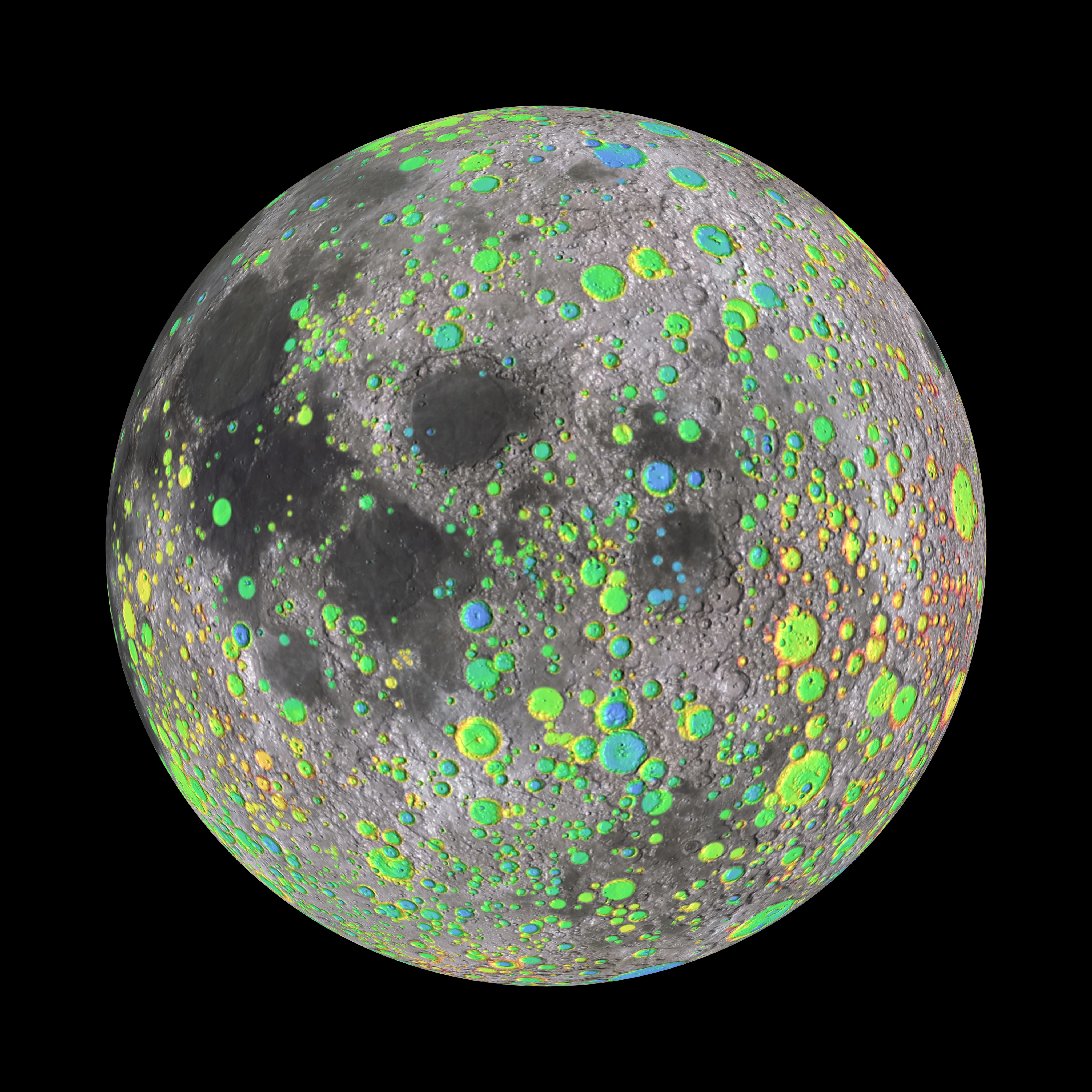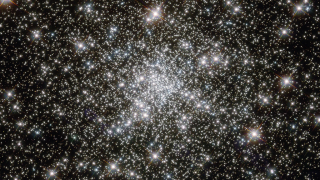Planets and Moons
ID: 3662
Some areas of the Moon have more craters than others. The number of large versus small craters also varies across the surface. A census of the crater population can tell scientists the relative ages of different parts of the surface and reveal information about the make-up of the early solar system.
Such a census has been compiled from the elevation data being sent back by the LOLA instrument on Lunar Reconnaissance Orbiter. It comprises over 5000 craters larger than 20 kilometers in diameter. Some conclusions drawn from an analysis of this crater catalog by members of the LOLA team are described in the September 17, 2010 issue of the journal Science.
This animation illustrates the process of systematically counting craters. Craters larger than 20 kilometers in diameter light up to show color-coded elevation. Some areas, such as the maria and the Orientale basin, are notably sparse, implying that these areas are younger. The processes that formed them erased the record of older impacts visible elsewhere on the Moon.


Counting Craters on the Moon
Such a census has been compiled from the elevation data being sent back by the LOLA instrument on Lunar Reconnaissance Orbiter. It comprises over 5000 craters larger than 20 kilometers in diameter. Some conclusions drawn from an analysis of this crater catalog by members of the LOLA team are described in the September 17, 2010 issue of the journal Science.
This animation illustrates the process of systematically counting craters. Craters larger than 20 kilometers in diameter light up to show color-coded elevation. Some areas, such as the maria and the Orientale basin, are notably sparse, implying that these areas are younger. The processes that formed them erased the record of older impacts visible elsewhere on the Moon.


Related
Visualization Credits
Ernie Wright (UMBC): Lead Animator
Marte Newcombe (GST): Animator
Chris Smith (HTSI): Producer
Andrew Freeberg (NASA/GSFC): Producer
James W. Head III (Brown University): Scientist
Marte Newcombe (GST): Animator
Chris Smith (HTSI): Producer
Andrew Freeberg (NASA/GSFC): Producer
James W. Head III (Brown University): Scientist
Please give credit for this item to:
NASA/Goddard Space Flight Center Scientific Visualization Studio
NASA/Goddard Space Flight Center Scientific Visualization Studio
Science Paper:
Head, James W. et al. (2010). Global distribution of large lunar craters: Implications for resurfacing and impactor populations. Science, 329(5998)
Short URL to share this page:
https://svs.gsfc.nasa.gov/3662
Mission:
LRO (Lunar Reconnaissance Orbiter)
Data Used:
Note: While we identify the data sets used in these visualizations, we do not store any further details nor the data sets themselves on our site.
This item is part of these series:
LRO - Animations
The Moon
Keywords:
SVS >> Elevation data
SVS >> HDTV
SVS >> Lunar
SVS >> Moon
SVS >> LRO
SVS >> Lunar Reconnaissance Orbiter
SVS >> LOLA
SVS >> Craters
NASA Science >> Planets and Moons
Head, James W. et al. (2010). Global distribution of large lunar craters: Implications for resurfacing and impactor populations. Science, 329(5998)
Short URL to share this page:
https://svs.gsfc.nasa.gov/3662
Mission:
LRO (Lunar Reconnaissance Orbiter)
Data Used:
LRO/LOLA/Digital Elevation Map also referred to as: DEM
August 2009 - May 2010This item is part of these series:
LRO - Animations
The Moon
Keywords:
SVS >> Elevation data
SVS >> HDTV
SVS >> Lunar
SVS >> Moon
SVS >> LRO
SVS >> Lunar Reconnaissance Orbiter
SVS >> LOLA
SVS >> Craters
NASA Science >> Planets and Moons













